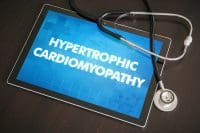What is rehabilitation nursing? It is caring for an individual with a disability, acute condition, or chronic illness and helping them reach their maximum potential and function or adapt to the new physical or neurological challenges they are facing. According to the Association of Rehabilitation Nursing, rehab nursing was not considered a specialty until 1976 by the American Nurses Association (Association of Rehabilitation Nursing; https://rehab nurse.org/about/history)
Rehab nursing requires a collaborative approach to caring for the patient. At Bayhealth Hospital, Sussex Campus/PAM Rehab, there is an interdisciplinary team of speech therapists, physical therapists, occupational therapists, hospitalists, case managers, physiatrists (rehab doctors), and nurses that meet weekly, if not daily, to identify discharge barriers and discuss patient progress. Some patients will require collaboration with specialties outside of the rehab unit, such as respiratory therapy, dialysis, wound care, or dietetics.
Every patient is unique; two patient charts may look identical, but when they are in rehab, they might have different barriers for discharge. For example, two patients may have identical hip fractures that were surgically repaired and are the same age with the same comorbidities, but one patient has six steps to enter their home, while the other has none. If they are unable to do steps because of hip precautions, it can delay discharge to their home setting.
Changes that have occurred in rehab nursing are that rehab nurses are now focusing on the patient as a whole and not just the injury or illness that led them to the rehab setting. Years ago, a patient who fell and broke their hip would have been given therapy for the broken hip, incision care, and pain management, but the underlying issue that contributed to the patient’s fall, such as alcoholism, was not treated. Forward to 2023, Nurse’s now utilize the SDOH (Social Determinants of Health) to assess areas that can be affecting the patient’s safety and overall health, such as housing, safe environments free from abuse, access to transportation, and money to afford food and medications. To address patients’ needs, Bayhealth Hospital has started sending a box of food home on discharge with patients who have food insecurities per their SDOH documentation and a referral to the Delaware Food Bank. For example, caring for a patient in the rehab setting with complications of self-detoxification from alcohol, that patient may not need traditional rehab nursing but instead needs someone to talk to and resources to help stay sober after discharge.
Another significant area that rehab nurses focus on is education, educating not only the patient but the caregiver or family member as well. Education can be formal or informal, depending on the complexity of the patient’s needs. The more education a patient and his support system receive, the better the patient’s outcome. In 2012, the Centers for Medicare and Medicaid Services implemented the Hospital Readmissions Reduction Program (HRRP). Since then, the United States has seen a fifty percent increase in the number of patients being sent to the post-acute setting to help prevent thirty-day hospital readmissions (Chih-Ying et al., 2020).
Pain management has truly evolved in the rehab setting and will continue until the opiate addiction crisis is trending downward. According to the Centers for Disease Control, in 2016, more than 11.5 million Americans reported misusing prescription opioids in the past year. Many people are prescribed opiate medications pre- and post-surgery. Pain management for the patients in the rehab setting is crucial as they must be able to participate in three hours of therapy a day at Bayhealth Hospital; pain management consults and an increase in nonpharmacological interventions and therapeutic modalities have become the norm. In previous years, patients would be discharged with a thirty-day supply of opiate pain medication. Now, they are only getting a three-day prescription and are told to follow up with their primary care physician. This also helps the patient to be more compliant in going to their follow-up appointments.
Rehabilitation nursing also focuses heavily on case management and discharge planning. In the acute care rehab at Bayhealth Hospital, the goal is to discharge the patient to the safest environment possible and avoid a thirty-day readmission. This is accomplished through collaboration with various home health agencies and community services to help the patient have a successful discharge to home. There is a new agency that offers services for Kent and Sussex County called PACE Your LIFE. The PACE Your LIFE agency recently celebrated its one-year anniversary. The agency is located in the old Milford Memorial Hospital, now known as the Milford Wellness Village.
PACE Your LIFE, a program of all-inclusive care for the elderly, provides comprehensive medical and social services to Kent and Sussex County community members aged 55 or older in their own homes. It allows seniors who require long-term care services from a nursing home to live in their homes. Bayhealth Hospital’s case managers and clinical navigators work closely with PACE Your LIFE to provide patients with an easier transition of care from one level to another and create great patient outcomes.

References
American Nurses Association (n.d.) https://www.nursingworld.org/
Association of Rehabilitation Nurses (n.d.) History of Rehabilitation Nursing https://rehabnurse.org/about/history
Centers for Disease Control and Prevention (n.d.) Prescription Opiates https://www.cdc.gov/opioids/basics/prescribed.html
Centers for Medicare and Medicaid Services (n.d) https://www.cms.gov/
Li, C. Y., Karmarkar, A., Lin, Y. L., Kuo, Y. F., & Ottenbacher, K. J. (2020). Hospital
Readmissions Reduction Program and Post-Acute Care: Implications for Service Delivery and 30-Day Hospital Read-mission. Journal of the American Medical Directors Association, 21(10), 1504–1508.e1. https://doi.org/10.1016/j.jamda.2020.05.018
Pace Your Life – A Nationwide Health Community (paceyourlifemwv.com)
Social Determinants of Health (n.d.) https://health.gov/healthypeople/priority-areas/social-determinants-health























